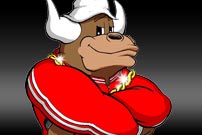 With the temperature dropping, it's time to find someone to keep you warm. Find your hookups with our online dating guide!
With the temperature dropping, it's time to find someone to keep you warm. Find your hookups with our online dating guide!
Live at Shea Stadium
- Punk
- 2008
- Buy the CD
Reviewed by Michael Fortes
()
In a place as huge as Shea, it can be difficult to gauge just how well a band is connecting simply by listening to a recording. In this case, it’s at least evident that this gig was a success during the end of the one moment of the concert where the band slows down their consistently frantic, in-your-face assault. When Joe Strummer concludes the reggae jam “Armagideon Time” with an unhinged scream and the band crashes back into the rocked-up arrangement of “The Magnificent Seven” it had started prior to “Armagideon,” the Shea crowd roars its approval back loudly enough to not only make it through the mikes, but to give some extra kick to an already gung ho performance. It’s enough to make one wonder why this medley didn’t make it to 1999’s From Here to Eternity (that ’99 live collection did feature one song from the Shea performance – “Career Opportunities”).
Throughout the set, in between rouging up songs like “Tommy Gun” and “English Civil War,” Strummer assumes a commanding presence, yet still carries himself like the DIY punk that he always was, keeping the momentum going while also acknowledging late audience stragglers by telling them, “if you don’t know what’s going on, ask the person standing next to you.” Their sound at times teeters on the brink of losing control (especially on “Rock the Casbah” and “Spanish Bombs”), yet considering that original drummer Terry Chimes had only rejoined the band just a few months prior, following the dismissal of Topper Headon, the band sounds tighter than they should. If anything, Chimes put some of the rock flavor back into the band in place of the more danceable funk rhythms that had become part of the Clash’s arsenal in the couple years prior to his return.
Strummer would eke out another three years with the Clash, contrary to the revisionist history that has crept into Clash lore since the re-launch of the band’s catalog almost a decade ago (1985’s underwhelming swan song Cut the Crap was conspicuously absent from the catalog upgrade). In Shea’s liner notes, photographer Bob Gruen muses that he was “surprised when the Clash broke up a few weeks” after the ’82 Shea gigs. In reality, it was almost another year before Strummer fired his partner in crime, vocalist/guitarist Mick Jones, and carried on for another couple of years with new guitar and drum recruits before disbanding the Clash with zero fanfare, in relative obscurity. Much as the group’s cheerleaders would like to think the Clash went out in a blaze of glory, such thoughts are little more than fantasy. Live at Shea Stadium is the soundtrack to that fantasy, and truly, one could hardly hope for a more rousing way to close the book on the Clash.
You can follow us on Twitter and Facebook for content updates. Also, sign up for our email list for weekly updates and check us out on Google+ as well.











